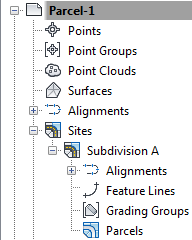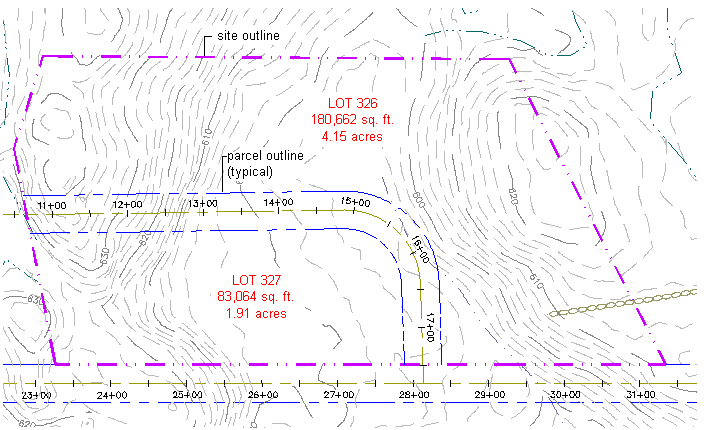Parcels are contained in a parcels collection, which in turn is contained in a site.
A drawing can include any number of sites, but each site has only one parcels collection. No unique parcel can belong to more than one site. You can see these relationships in the Sites collection in Toolspace, on the Prospector tab:

Parcels in a collection can be either unattached or touching, but they cannot overlap. If you attempt to overlap two parcels, the region of overlap defines a third parcel. Similarly, if an alignment crosses a parcel, it divides the parcel into two parcels. In the following illustration, before adding the alignment, the site was all one parcel:

In situations that require overlapping parcels, such as overlaying a subdivision with soil regions, you can put the subdivision parcels in one site and the soil region parcels in another site. Multiple sites can overlay one another because their topologies are independent. Although everything within a site is topologically related, sites are not topologically related to each other.
To prevent an alignment from changing a parcel, the two objects should be in different sites. To prevent an alignment from interacting with any parcel objects, select <none> when prompted to select a site. See Understanding Alignment Objects.